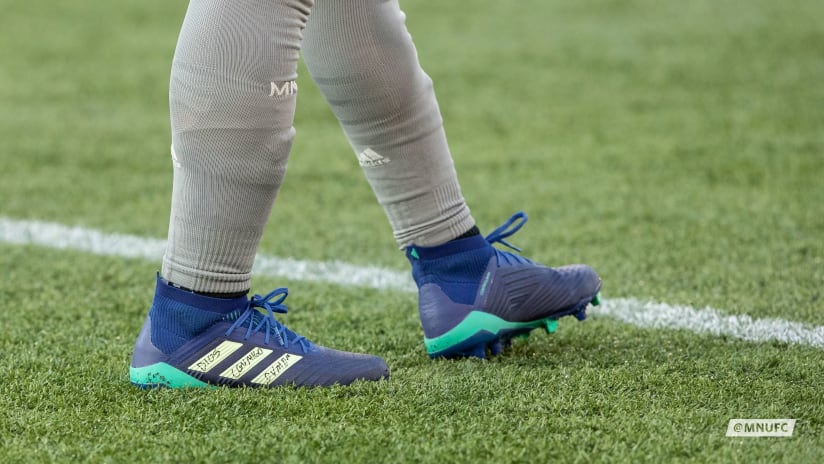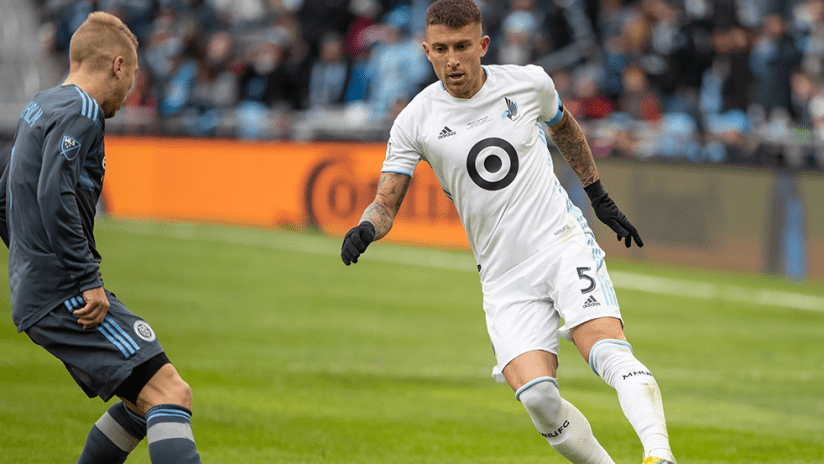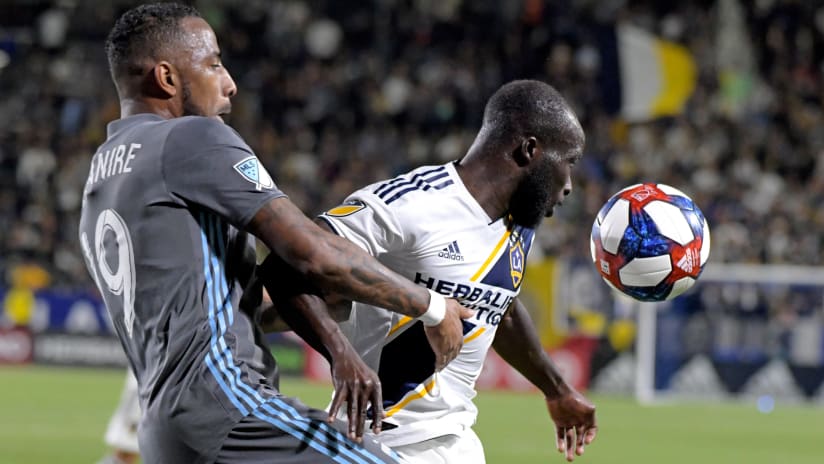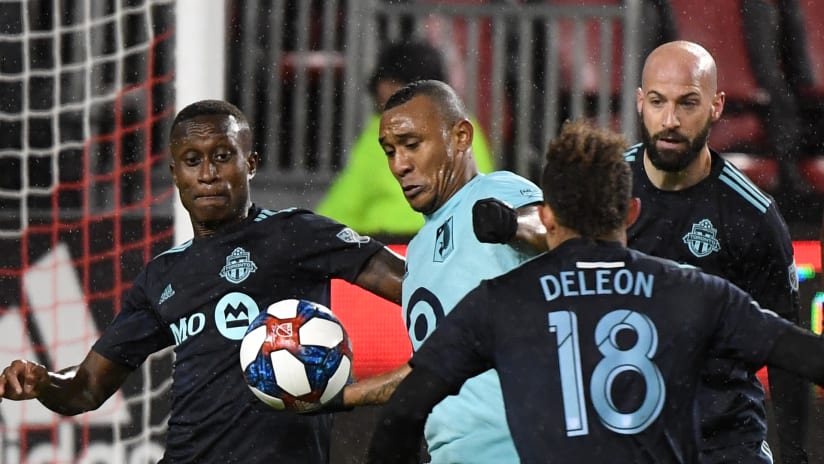Day in and day out, pro soccer players run drills and practice shots in an effort to imprint their physical actions into their subconscious. Repetition breeds muscle memory, all in the hopes that when called on, thinking is almost secondary. Any athlete wants to get into the rarefied air of The Zone — that place where things flow, where they work effortlessly.
But physical training is only one part of it. Psychologically, every player needs to find a delicate balance between shutting the world out and keeping what matters close. More than ever, it seems, players are doing it through their gear, blending ritual, tradition and superstition as they work to keep their heads in the game.
“It’s small, little things,” says MNUFC Equipment Manager Ryan Natusch. A major part of his job is keeping all the players’ gear straight. When a new player comes in, he does his best to find out from the kit man at the player’s last club everything about a player’s sizes and preferences. But some of it just comes down to spending time with a player and his gear. Once a player develops a habit that seems to be working for him, he’s likely to keep it going for years.
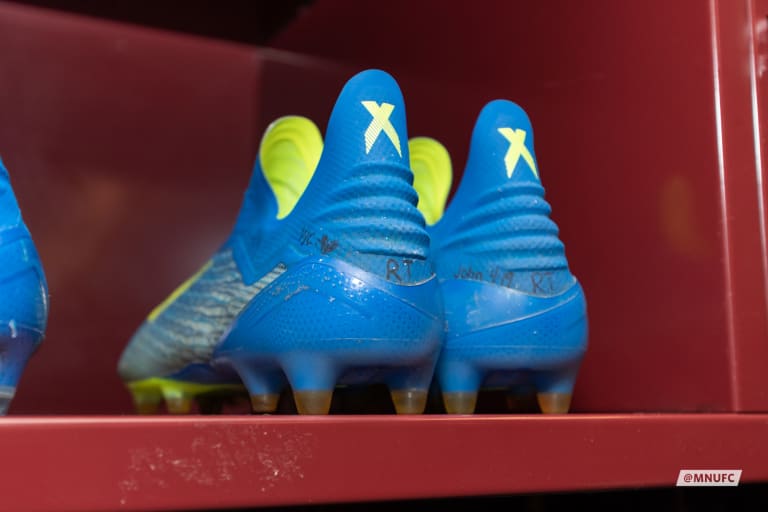
Three years ago, while the team was still in the NASL, Christian Ramirez began having his then-fiancée Val write on his cleats. It’s a tradition he’s kept going through their wedding and the start of their marriage, and now it includes the couples’ infant daughter, Zara.
“Whenever I get a new pair of shoes, my wife writes on them,” he says. “She writes her favorite Bible verse, John 4:19. Then she writes mine, Philippians 4:13. And she writes her initials and our daughter’s name.”
“It’s not just on boots,” Natusch says. “Darwin [Quintero] wraps his ring finger and then writes something on it. Darwin has his son’s name on his cleats and special shin guards. It’s all mainly for family. I think for these guys, every time they go out on the field, they play for their family before anything else.”

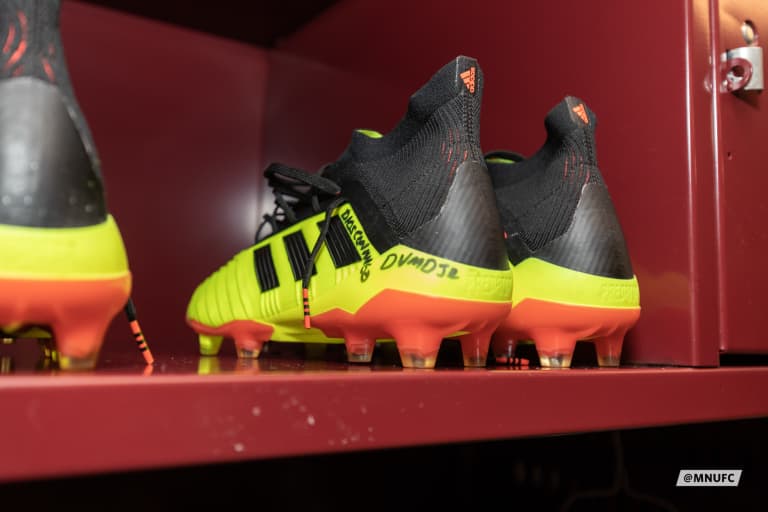
Goalkeeper Matt Lampson, who beat Hodgkin’s lymphoma when he was a teenager, has his number — a very specific reminderof what he overcame — and “Lampstrong” — the name of his foundation — on his gloves and cleats. Francisco Calvo has a picture of his son, Gael, and the Costa Rican flag on his shin guards. His cleats are from the World Cup and also have his son’s name on them. For Calvo and others, some of his traditions tip over into superstition.
“Before a game, no one touches Calvo’s cleats when Calvo gets there,” says Natusch. “He’ll put them on the ground and no one can touch them and if someone does? It’s done.” The implication is that you don’t want to be the one who touches the cleats.
For Abu Danladi, he prizes his adidas F50s because they were the cleats he got when he first came to the country from Ghana. He still has his first pair in his locker — missing the insole because they fit his flat feet better that way.
“I wish I had a bunch in storage that I could switch around,” he says. “I’ve just got to make sure I’m keeping them in good condition because they don’t make them anymore. I make sure I save them for the games.”
Miguel Ibarra is less about the specific model and more about what they’ve done for him lately. To get back into form this season after struggling last year, Ibarra went through a lot of hard work in the offseason, but he also brought back a tradition of rotating different colors of boots throughout the season from his last stint with the Loons.
“I used to do it back in the NASL days,” says Ibarra. “This year, I told myself that I would do it again because that’s when I was playing my best. So it was kind of a mentality thing that I had going. I’m sure I had black, white, red, blue cleats. And then, every time I play a game and I score, I wear them again the next game, and if I don’t, then I’ll switch them again to another color.
“I’m always seeing which ones are scoring and which ones are not,” he concludes.
That desire to give agency over to some impartial third party — it’s the cleats scoring, not him — is one of the most genuinely human things about sports and athletes. Soccer is unmistakably one of the cruelest sports, one in which one team can thoroughly dominate another and still come out on the wrong end of the result. A slip on the turf here, a ball ricocheting off a post there, and three points can easily turn into none. It’s enough to make anyone look for any edge they can find, even if it’s just a bit of comfort brought on by a ritual.
Head Coach Adrian Heath, though, is having none of it.
“I think it’s the biggest load of nonsense I have ever seen in my life,” he says, playfully, but not without bite. Heath is about as old school as they come, but isn’t that allegiance to a simpler time its own form of faith or tradition? You can practically hear the twinkle in his eye when he talks about those halcyon days. “There were studs when it’s wet, there were Mouldies [shorter, molded cleats] when it was dry,” he says. “Perfect.”
Soccer and the gear of those who play it keeps changing, no matter how much we might want to return to the days of rubber soles. The technology might keep leaping ahead, but players will also keep personalizing it. It’s a way to focus the mind, to remind themselves of why they play.
Ramirez, for example, might be willing to let his infant daughter contribute to the writing on his cleats one day.
“Yeah, I’ll let her,” he says. “When she’s old enough.”

